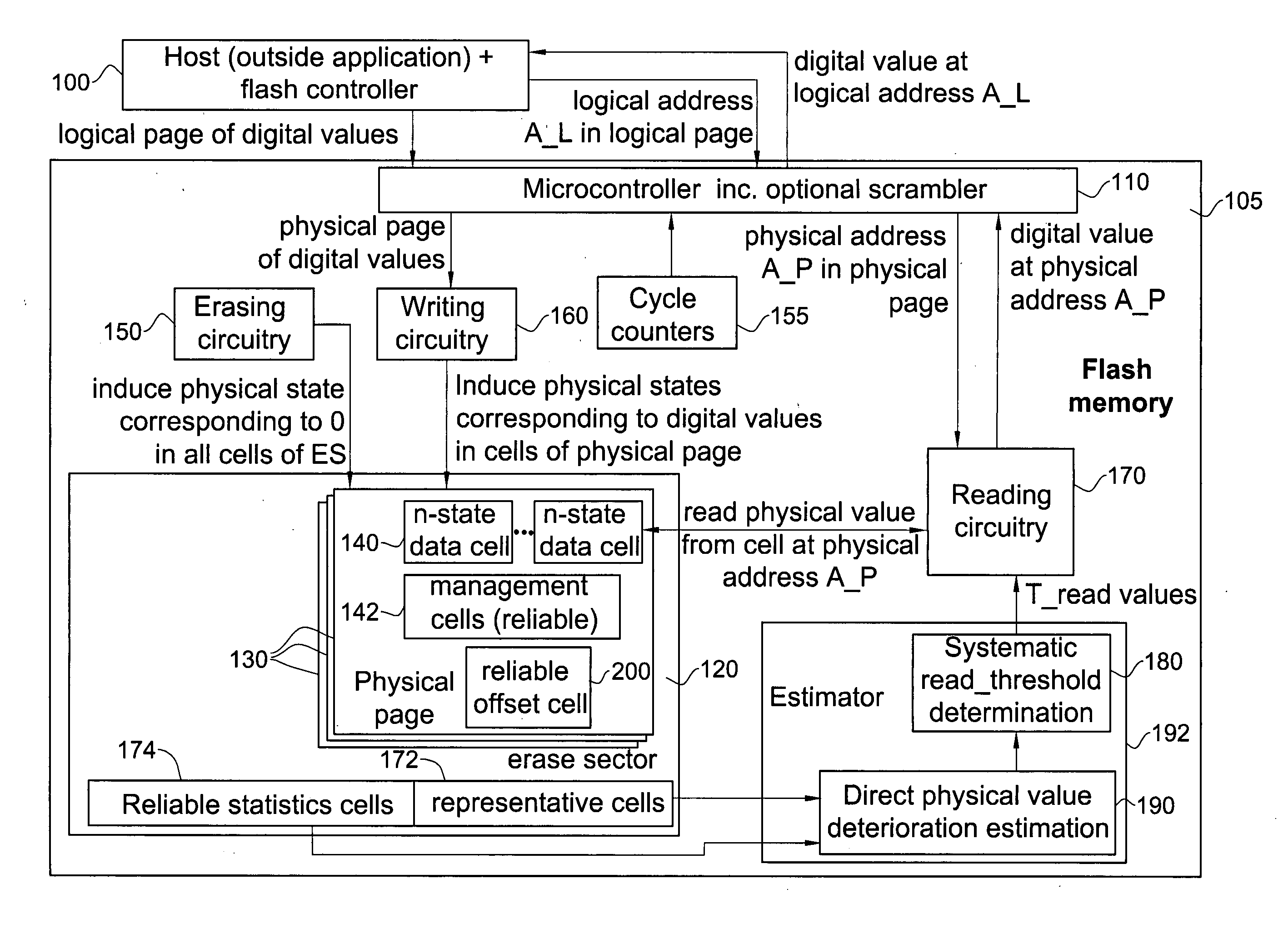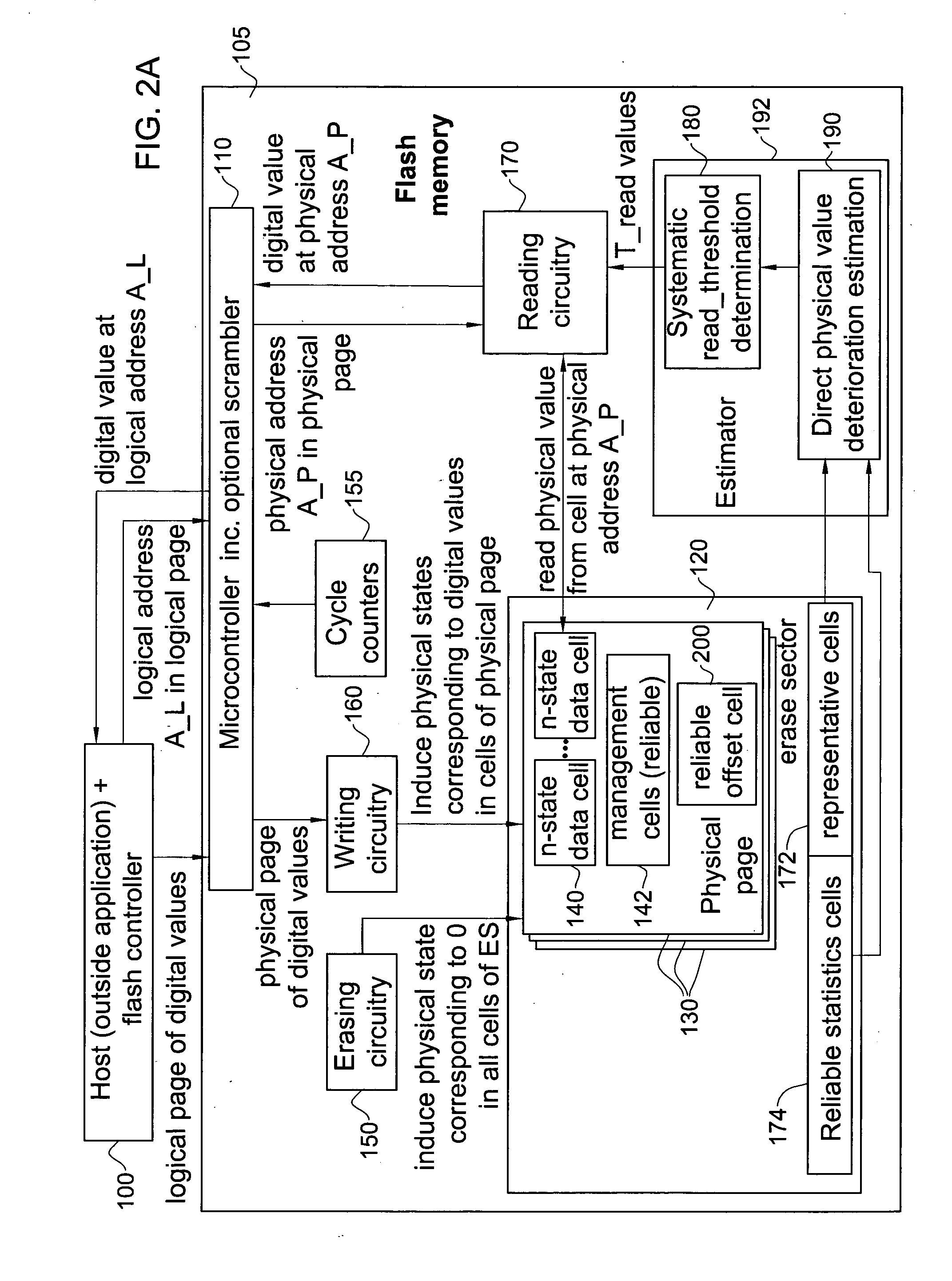Flash memory device with physical cell value deterioration accommodation and methods useful in conjunction therewith
a flash memory and physical cell value technology, applied in the field of flash memory devices, can solve the problems of increasing reducing the reliability of the device, and the detection errors of the measured level during the read operation, so as to increase the bit error rate, increase the density, and enhance the effect of inaccuracy effects
- Summary
- Abstract
- Description
- Claims
- Application Information
AI Technical Summary
Benefits of technology
Problems solved by technology
Method used
Image
Examples
Embodiment Construction
[0077]Reference is now made to FIG. 1 which is a graph (top) of manufacturer-defined initial cell voltage distributions, which apply to a flash memory device which has yet to undergo cycling and retention vs. a graph (bottom) of cell voltage distributions which apply to a flash memory device which has undergone cycling and retention.
[0078]A read threshold, T* (also termed herein T_read) is used to distinguish between each two adjacent programming charge levels. Generally these two charge levels comprise physical values clustering normally around a first charge C_1, and physical values clustering normally around a second charge level C_2.
[0079]As described in detail below, T_read may be computed by dedicating a first subset of the representative cells, comprising at least one and typically several representative cells, to storing C_1. A second subset of the representative cells, comprising at least one and typically several representative cells is dedicated to storing C_2. These two ...
PUM
 Login to View More
Login to View More Abstract
Description
Claims
Application Information
 Login to View More
Login to View More - R&D
- Intellectual Property
- Life Sciences
- Materials
- Tech Scout
- Unparalleled Data Quality
- Higher Quality Content
- 60% Fewer Hallucinations
Browse by: Latest US Patents, China's latest patents, Technical Efficacy Thesaurus, Application Domain, Technology Topic, Popular Technical Reports.
© 2025 PatSnap. All rights reserved.Legal|Privacy policy|Modern Slavery Act Transparency Statement|Sitemap|About US| Contact US: help@patsnap.com



